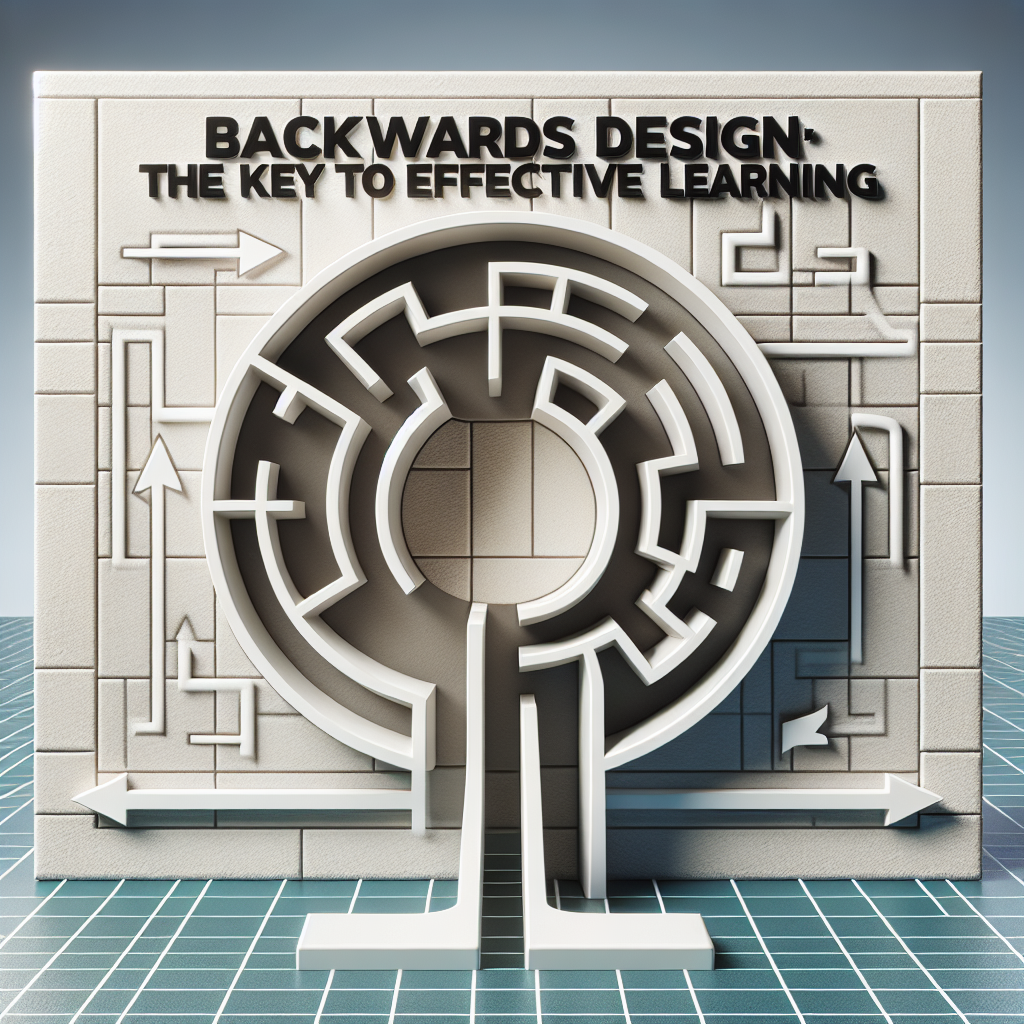Imagine if your teachers designed their lessons the same way app developers design games - starting from where you reach the high score. That's sort of the concept behind backward design, a teaching approach that flips the traditional script on education. Originating from educational theorists like Grant Wiggins and Jay McTighe in the 1990s, backward design focuses on identifying desired learning outcomes first and planning backward from those goals. Instead of starting with textbooks and lesson plans, educators begin with where they want the students to end up in terms of knowledge and skills.
Backward design is like setting the GPS for classroom learning. While the concept has sparked the interest of forward-thinking educators around the globe, it particularly resonates with Gen Z, who are all about efficiency and outcome. In traditional curriculum design, teachers often begin with tons of content they feel needs to be covered, sometimes missing the forest for the trees. In backward design, though, the road to learning is paved with purpose.
The beauty of backward design is that it keeps the end goal in sight. Whether the learning space is in a downtown school in New York or a virtual classroom somewhere in California, backward design creates a roadmap that focuses on mastering skills over memorizing facts. Imagine a classroom where students know exactly why they're learning what they're learning - it's liberating and, dare I say, empowering.
Yet, like any educational innovation, backward design also stirs up discussions. Some educators are cautious, worrying that this approach might limit their creativity or make the learning experience monotonous. Others fear that having strict goals might stifle spontaneous learning moments. But let's not lose sight of the fact that backward design is not about rigidity; it's more about clarity and alignment.
Moving on from the abstract ideas to a more concrete example, let's see backward design in action. Imagine you’re an English teacher aiming to help your students express their viewpoints effectively. Instead of teaching every grammar rule in the book and hoping it’ll magically lead to this outcome, you start by setting the goal: students should be able to write convincing, coherent essays by the end of the course. With this goal in mind, you plan exercises that build upon each other, forming a bridge towards this end result.
Of course, backward design doesn’t mean educators are locked into a single path. Like any effective roadmap, it should account for detours and new routes, because life is unpredictable, and so is learning. Flexibility is an unspoken rule that runs parallel with the structured path of backward design.
Critics sometimes question whether an approach like backward design undervalues content or leads to teaching to the test. Sure, in a world hyper-focused on standardized testing, these concerns hold weight. However, proponents argue that backward design, when implemented with care, encourages deep learning instead of surface-level cramming. It’s the difference between building a skyscraper on quicksand versus laying a foundation on sturdy bedrock.
But let’s pivot back and gear this toward our Gen Z readers. You're growing up in a world hungry for instantaneous results, where you’re swiping right or left faster than books can spew information. This fast-paced environment makes backward design feel like a tailored fit, as it promotes clear, achievable outcomes and gives purpose to your learning experience.
In today’s digital educational landscape, resources like Khan Academy or Duolingo epitomize backward design principles. They set clear objectives for each level or lesson, enabling users to track progress and understand the ‘why’ behind their learning path. These platforms let you play an active role in your education, a principle deeply embedded in backward design.
Imagine applying these principles beyond the classroom. Think about setting life goals in the same way - starting from where you want to be and making decisions backward. Whether it's fitness, career, or learning a new skill, backward design can guide you to set purposeful steps toward achieving your personal aspirations.
Backward design has practically woven itself into the fabric of forward-thinking education methods. By continually viewing it through a critical lens, educators can extract the best practices while remaining cautious of pitfalls. It's an approach that echoing the adaptive and resourceful spirit of Gen Z, creating learners who not only absorb knowledge but actively use it to shape their worlds.

